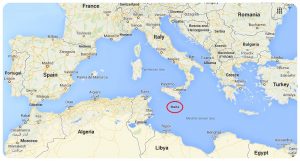
A small spot of land in the middle of the Mediterranean Sea, a priceless strategic island with a fascinating history.
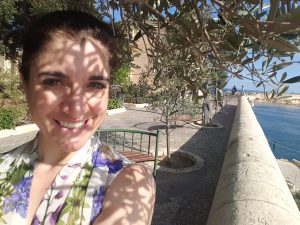 As I walked around the capital, Valetta, at sunset on the last days of November, the Christmas decorations gave the old town and charming street a warm feel in tune with the temperature. It had been a hot winter day of 20-22 degrees, and I enjoyed the strange winter-summer holiday atmosphere. It was a far contrast with the last island I visited, Iceland. I had gone South this time. The Republic of Malta is an archipelago composed of three islands, the largest one being Malta. It is located just south of Sicily, with Tunisia and Libya on the other side of the sea.
As I walked around the capital, Valetta, at sunset on the last days of November, the Christmas decorations gave the old town and charming street a warm feel in tune with the temperature. It had been a hot winter day of 20-22 degrees, and I enjoyed the strange winter-summer holiday atmosphere. It was a far contrast with the last island I visited, Iceland. I had gone South this time. The Republic of Malta is an archipelago composed of three islands, the largest one being Malta. It is located just south of Sicily, with Tunisia and Libya on the other side of the sea.
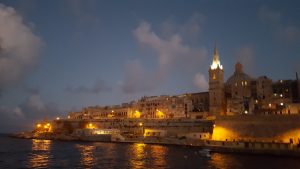
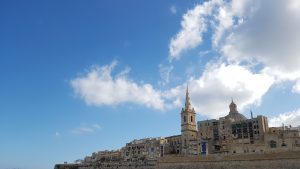
I had heard about Malta for years. My friend MC had first mentioned it, as her roots are there. Another good friend moved to the main island two years ago for work. Then last summer, at friends of my parents who live there half the year, I met a lovely Maltese woman who lives there with her husband. Her praises for her homeland sealed it: I booked my tickets.
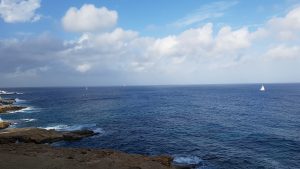

My parents’ friends, now also mine, had kindly invited me to stay with them during my visit. It is always a treat to stay with people locally, as they share they knowledge, observation and advice on how best to enjoy the trip. Jan-Otto and Jocelyne did all this and more. So did the Teresa (the Maltese I had met during summer) and her husband Joe. They confirmed that the people you meet along your travel are the highlights of the journey.
There is so much I did not get to see, and I really ought to go back, but for now, here are the few landmarks and impressions I want to share with you about my visit.
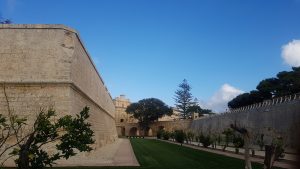 First, the old city of Mdina. The fortified city was the capital of Malta from the Antiquities until late Medieval times. The city is still confined within its wall and has a population of about 300 people. Mdina is also called Città Vecchia or Città Notabile, as only the old nobility and families of Malta reside inside its wall.
First, the old city of Mdina. The fortified city was the capital of Malta from the Antiquities until late Medieval times. The city is still confined within its wall and has a population of about 300 people. Mdina is also called Città Vecchia or Città Notabile, as only the old nobility and families of Malta reside inside its wall.
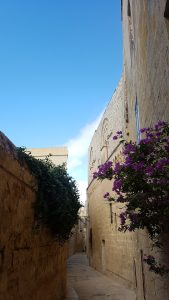 Walking the streets of Mdina, I learned that they were designed so that the length would be no further than the flight of an arrow.
Walking the streets of Mdina, I learned that they were designed so that the length would be no further than the flight of an arrow. 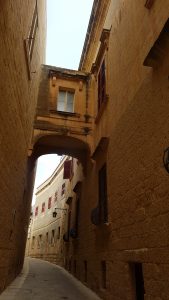 They are a perfect representation of balanced architectures from the old towns around the Mediterranean Sea, giving both a feel of Southern Italy or Tunisia. The quality of the stones, coming directly from the quarry of Malta, are full of light and sunshine with a honey colour turning rosy as time passes in the sun. Sometimes, one can glance a peek at hidden treasure of the inside gardens, with the famous Malta December oranges dropping from above a wall.
They are a perfect representation of balanced architectures from the old towns around the Mediterranean Sea, giving both a feel of Southern Italy or Tunisia. The quality of the stones, coming directly from the quarry of Malta, are full of light and sunshine with a honey colour turning rosy as time passes in the sun. Sometimes, one can glance a peek at hidden treasure of the inside gardens, with the famous Malta December oranges dropping from above a wall.
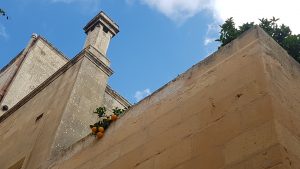
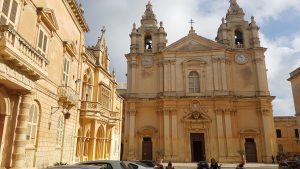 Mdina also has a beautiful cathedral. We walked in just as the nativity was set up, and the specialist explained to us how important were all the details of the setting. Applying the principles of the nativity from Naples, each culture and times were represented, from Asia to Africa, from Antiquity to Medieval. I did not see any character with a mobile though…
Mdina also has a beautiful cathedral. We walked in just as the nativity was set up, and the specialist explained to us how important were all the details of the setting. Applying the principles of the nativity from Naples, each culture and times were represented, from Asia to Africa, from Antiquity to Medieval. I did not see any character with a mobile though…
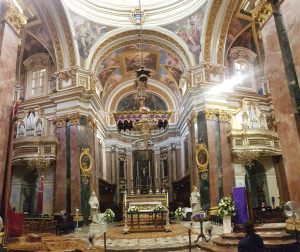

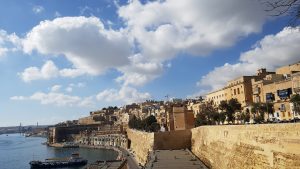 Next, Valetta, the capital of the Republic of Malta. Valetta is much smaller than I expected. In truth, there are many so called ‘cities’ (some refer to them as villages. I agree with them) attached to each other to the point that in other part of the world, they could be considered as boroughs. However, there is a certain charm to think of each extension of lands in the sea being a mini-city. Valetta is the most recent one among the old fortified cities, and the one with the strongest defence. It is built in a grid, which doesn’t take away the charm of the town.
Next, Valetta, the capital of the Republic of Malta. Valetta is much smaller than I expected. In truth, there are many so called ‘cities’ (some refer to them as villages. I agree with them) attached to each other to the point that in other part of the world, they could be considered as boroughs. However, there is a certain charm to think of each extension of lands in the sea being a mini-city. Valetta is the most recent one among the old fortified cities, and the one with the strongest defence. It is built in a grid, which doesn’t take away the charm of the town.
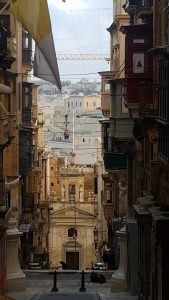 The Maltese, I already know from my friends and guides, are welcoming and open. I had some fun encounters and heard many unusual stories, not least the life story of the Chaplain of the Church of Saint Paul’s Shipwreck. After 10 years of Theology studies, he pursued his interests on the side with two Masters in humanities and international rights. So in the oldest Maltese Church, a religious man shared his impression on a moment of history in The Hague, when he attended the trial of Milosevic at the Hague in 2002.
The Maltese, I already know from my friends and guides, are welcoming and open. I had some fun encounters and heard many unusual stories, not least the life story of the Chaplain of the Church of Saint Paul’s Shipwreck. After 10 years of Theology studies, he pursued his interests on the side with two Masters in humanities and international rights. So in the oldest Maltese Church, a religious man shared his impression on a moment of history in The Hague, when he attended the trial of Milosevic at the Hague in 2002.
You always learn something new talking to strangers.
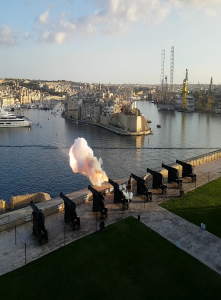 Really, the beauty of Malta is also in its history and bravery in front of adversity. So many times, they stood up to their enemies for Christianity and the values they believed in: we owe them a lot more than we realise in Europe. However, I will leave to someone else to give you a brief history of Malta: I found the video below when I was preparing my trip, and it is precise and concise, sharing the military history of Malta in 6 minutes. Watch it, it is worth it.
Really, the beauty of Malta is also in its history and bravery in front of adversity. So many times, they stood up to their enemies for Christianity and the values they believed in: we owe them a lot more than we realise in Europe. However, I will leave to someone else to give you a brief history of Malta: I found the video below when I was preparing my trip, and it is precise and concise, sharing the military history of Malta in 6 minutes. Watch it, it is worth it.
Thank you for reading,
Virginie